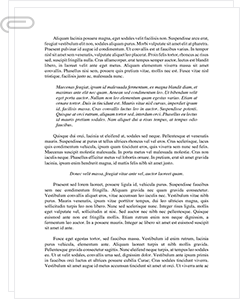 Study Document
Study Document
Updating Caribbean Public Administration with AI Technology Introduction
Pages:26 (7725 words)
Sources:50
Document Type:Introduction
Document:#51955907
Transformative Artificial Intelligence and Digital Government Innovation for Public Sector Performance Management1.1 Background of the Research1.1.1 Overview of the ProblemTransformative artificial intelligence (AI) and digital government innovations are increasingly becoming central to enhancing public sector performance management across the globe (Newman et al., 2022). This shift towards digitalization relies on the potential of AI to streamline processes, act with transparency, and increase engagement between citizens and government institutions (Latupeirissa et al., 2024).The integration of AI and digital government technologies is poised to radically enhance the effectiveness and efficiency of public services (Milakovich, 2021). Public institutions can help in the process of achieving sustainable development and managing social demands. Governments face the dual task of integrating new technologies while making sure that they contribute positively to public welfare and align with broader sustainability goals?? (Kuziemski, and Misuraca, 2020).However, this transformation is not without its challenges. The adoption of AI and digital solutions requires careful consideration of various factors, including ethical implications, privacy concerns, the digital divide, and the potential for increased surveillance and data misuse (Ashok et al., 2022). The deployment of these technologies must be managed with a keen awareness of their societal impacts, particularly in terms of equity and inclusion.Moreover, the successful integration of AI in public governance is contingent upon the availability of digital infrastructure and the ability of public sector employees to adapt to new technologies. In regions like the Caribbean, for instance, the varying levels of technological infrastructure and the readiness of the public sector workforce are significant challenges (Criado, 2021). These regions must address these foundational issues to fully capitalize on the benefits of digital government innovations.In essence, as the transformative potential of AI and digital government innovations in public sector management is immense, it requires a structured and sensitive approach to improve that these advancements truly enhance public sector performance in an equitable and sustainable manner.1.1.2 Specific Information on the IssueThe core of this research is centered on the strategic deployment of AI and digital government technologies to enhance public sector performance management. The implementation of these technologies varies widely across different regions and institutions. Some have seen significant improvements in efficiency and service delivery, but others grapple with substantial barriers. There are, in fact, several layers of these challenges.Technological InequityTechnological inequity remains a barrier to the effective implementation of AI and digital solutions, particularly in the public sectors of developing regions (Mhlanga, 2021). The disparity in the availability and quality of technological infrastructure across different geographical and socioeconomic regions limits the scope and effectiveness of digital transformations. This inequity hampers the deployment of advanced technologies while worsening existing challenges in public administration. Many governments face the dual pressure of managing substantial public service obligations as they try at the same time to allocate adequate resources for technological upgrades (Berman et al., 2021). This situation is further complicated by the financial burdens that many countries bear, which constrain their ability to invest in necessary digital infrastructure improvements (Berman et al., 2021). As a result, the gap between the technology haves and have-nots widens and creates a fragmented landscape where only a fraction of the population benefits from digital government services.Privacy ConcernsThe integration of digital solutions in public services also involves the extensive collection and processing of personal data, elevating the risk of privacy violations. Concerns about data protection and the potential misuse of information are considerable when governments seek to implement AI for public administration (Kuziemski and Misuraca, 2020). These concerns necessitate the establishment of robust governance frameworks and stringent data protection laws that not only safeguard citizen data but also enhance transparency in…
…methodology used in the study, including the research design, data collection methods, and analytical techniques. It will explain the choice of qualitative and quantitative approaches and discuss the rationale behind the selection of specific case studies within CARICOM. This chapter aims to ensure the validity and reliability of the research findings.Chapter 4: Analysis of AI and Digital Government Applications This chapter presents the findings from the data collected on the current applications of AI and digital government technologies in CARICOM public sectors. It will analyze how these technologies are being used to enhance operational efficiencies, decision-making processes, and service delivery in various government departments.Chapter 5: Challenges to Implementation This chapter discusses the main challenges and barriers to the effective implementation of AI and digital government technologies identified through the research. It will cover technological, organizational, and policy-related challenges, providing insights into the obstacles that prevent these technologies from reaching their full potential in enhancing public sector performance.Chapter 6: Perceptions and Attitudes of Public Officials This chapter examines the perceptions and attitudes of public officials toward the integration of AI and digital technologies in their work environments. It will explore factors influencing technology acceptance and resistance and assess the impact of these technologies on public sector employees' work practices and attitudes.Chapter 7: Strategic Recommendations Based on the research findings, this chapter will propose strategic measures to enhance the adoption and effectiveness of AI and digital government technologies in CARICOM public sectors. It will offer detailed recommendations for policy adjustments, training programs, infrastructure development, and other strategic interventions needed to support digital transformation in public governance.Chapter 8: Conclusion and Future Directions The final chapter will summarize the key findings of the study, discuss the implications for policy and practice, and provide recommendations for future research. It will also reflect on the broader impacts…


